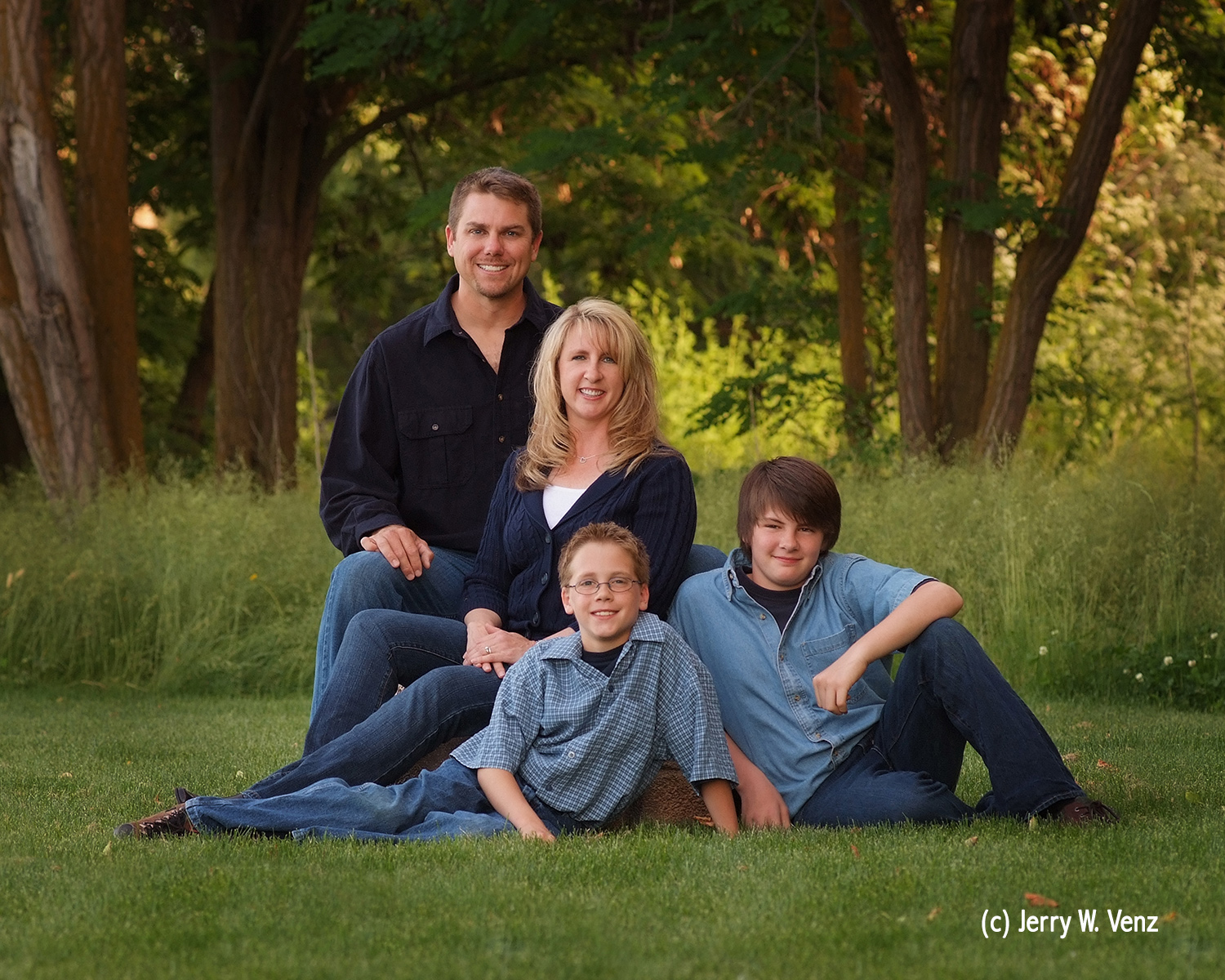All of our natural light is created by our Sun, but for our purposes, as portrait photographers, we are concerned with these 5 Types of Natural Light:
1) Direct sunlight (Mid-Day)
2) Fully overcast sky
3) Blue Sky (indirect sun)
4) Sunset (magic hour) or sunrise
5) Window Light (or open door way)
As I just stated our source is the sun, but the worst lights and the best lights on this list are sunlight modified by our environment or atmosphere.
One of the environmental modifications we often use is the Open Shade created by trees. This is what I look for as one of my criteria for a good outdoor location. Unfortunately, I see many photographers placing their subjects into deep (closed) shade, thinking that if a little shade is good then total shade must be better. They seem to think that the shade IS their light source. NO, shade is NOT a good light source. SHADE IS A TOOL TO BLOCK LIGHT, it's my Gobo, creating negative fill (like my trees) for my subjects.
In my first example I placed this family in open shade created by a line of trees at camera right, but their Key Light is a big patch of Blue Sky from the Left. In addition, because I choose the time of day (about 2 hours before sunset) I've got nice light in their background.
 |
| Great Light: CLEAR BLUE SKY |
 |
| Poor Light: OVERCAST SKY |
The overall color is now flat and dull--even through we have fall colors in the background--because there's no back light.
If I think we're going to have a fully overcast sky on a session I cancel and reschedule--I treat it like a rain day. There are those exceptions, like in the above image, when a reschedule can't be done, and then you do the best you can given the light.
Next week I'll go down the whole list of the 5-Types of Natural Light and their uses. 'Till next week…
Author: Jerry W. Venz, PPA Certified, Master Photographer, Craftsman
Training site: http://www.LightAtTheEdge.com
No comments:
Post a Comment